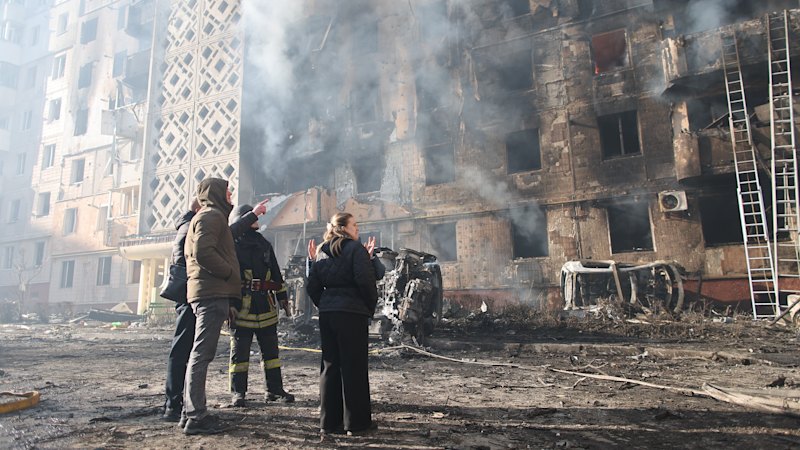
US President Donald Trump’s proposed peace plan for Ukraine has sparked significant backlash in Kyiv. The plan, which suggests halving Ukraine’s military and ceding territory to Russia, comes at a time when the US is also tightening oil sanctions against Moscow, cutting into its critical revenue streams.
Trump’s proposal was sent to Ukrainian President Volodymyr Zelensky in anticipation of potential talks, despite strong objections from Ukrainian political leaders who are advocating for a more forceful stance against the Kremlin. Ukrainian Prime Minister Yulia Svyrydenko emphasized the effectiveness of existing pressures on Russia, arguing for their intensification rather than concessions.
“While Russia continues killing innocent civilians, destroying homes, and targeting critical infrastructure, the strategy of pressure on Russia is proving effective,” Svyrydenko stated. “It is crucial to further strengthen energy and financial sanctions against the aggressor state.”
Svyrydenko’s comments followed a meeting with US Army Secretary Dan Driscoll in Kyiv. President Zelensky also acknowledged his meeting with Driscoll, expressing a willingness to discuss the US plan.
“Our teams – Ukraine and the USA – will work on the points of the plan to end the war,” Zelensky announced on Telegram. “We are ready for constructive, honest, and prompt work.”
Details of the Controversial Peace Plan
The American proposal reportedly includes 28 points, one of which involves Ukraine relinquishing land in the Donbas region, some of which is currently under Ukrainian control. Additionally, the plan suggests a significant reduction in Ukraine’s defense forces and the relinquishment of long-range missiles capable of reaching Russian targets. In exchange, the US would provide a security guarantee, though this has been met with skepticism in Kyiv.
Oleksandr Merezhko, head of the foreign affairs committee in Ukraine’s parliament, criticized the plan as “absolutely senseless” in comments to The Kyiv Independent. Zelensky’s office confirmed receipt of the draft, reiterating its commitment to working constructively with both the US and international partners to achieve peace.
Escalating Conflict and International Reactions
The peace plan emerges amid heightened conflict, with Russia launching 476 drones and 48 missiles at Ukraine in a single night, resulting in 26 deaths and approximately 100 injuries. The attack included a strike on an apartment building in Ternopil, leaving several, including children, missing.
European Commission foreign policy chief Kaja Kallas welcomed the US’s peace efforts but pointed to the recent Russian bombings as evidence of Moscow’s lack of commitment to peace.
“For any plan to work, it needs the Ukrainians and Europeans on board,” Kallas stated. “We have to understand that in this war there is one aggressor and one victim. We haven’t heard of any concessions on the Russian side.”
Historical Context and Future Implications
This peace proposal follows a meeting three weeks ago between Trump’s special envoy, Steve Witkoff, and senior Russian official Kirill Dmitriev in Florida. Despite these discussions, Kremlin spokesperson Dmitry Peskov denied any ongoing consultations.
Meanwhile, the US is set to implement tougher sanctions on Russian oil exports, targeting major suppliers Lukoil and Rosneft. These sanctions are expected to further diminish Moscow’s oil revenues, as some buyers are already reducing their reliance on Russian oil to avoid falling afoul of the American sanctions regime.
The unfolding situation underscores the complex geopolitical dynamics at play, with potential implications for regional stability and international relations. As the US and Ukraine navigate these diplomatic waters, the global community watches closely, aware that the outcomes could reshape the landscape of Eastern Europe.





